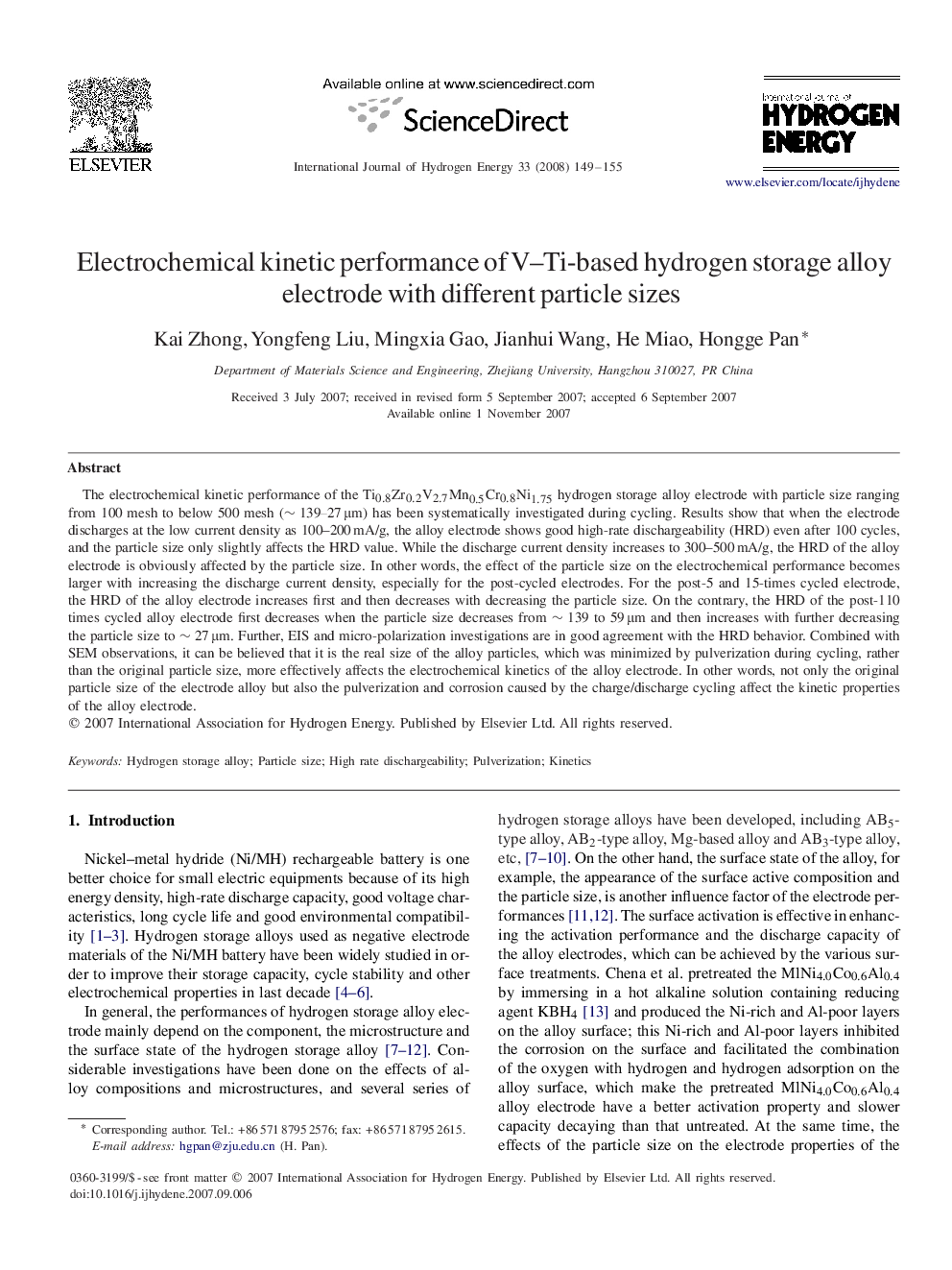| Article ID | Journal | Published Year | Pages | File Type |
|---|---|---|---|---|
| 1279446 | International Journal of Hydrogen Energy | 2008 | 7 Pages |
Abstract
The electrochemical kinetic performance of the Ti0.8Zr0.2V2.7Mn0.5Cr0.8Ni1.75 hydrogen storage alloy electrode with particle size ranging from 100 mesh to below 500 mesh (â¼139-27μm) has been systematically investigated during cycling. Results show that when the electrode discharges at the low current density as 100-200 mA/g, the alloy electrode shows good high-rate dischargeability (HRD) even after 100 cycles, and the particle size only slightly affects the HRD value. While the discharge current density increases to 300-500 mA/g, the HRD of the alloy electrode is obviously affected by the particle size. In other words, the effect of the particle size on the electrochemical performance becomes larger with increasing the discharge current density, especially for the post-cycled electrodes. For the post-5 and 15-times cycled electrode, the HRD of the alloy electrode increases first and then decreases with decreasing the particle size. On the contrary, the HRD of the post-110 times cycled alloy electrode first decreases when the particle size decreases from â¼139 to 59μm and then increases with further decreasing the particle size to â¼27μm. Further, EIS and micro-polarization investigations are in good agreement with the HRD behavior. Combined with SEM observations, it can be believed that it is the real size of the alloy particles, which was minimized by pulverization during cycling, rather than the original particle size, more effectively affects the electrochemical kinetics of the alloy electrode. In other words, not only the original particle size of the electrode alloy but also the pulverization and corrosion caused by the charge/discharge cycling affect the kinetic properties of the alloy electrode.
Related Topics
Physical Sciences and Engineering
Chemistry
Electrochemistry
Authors
Kai Zhong, Yongfeng Liu, Mingxia Gao, Jianhui Wang, He Miao, Hongge Pan,
